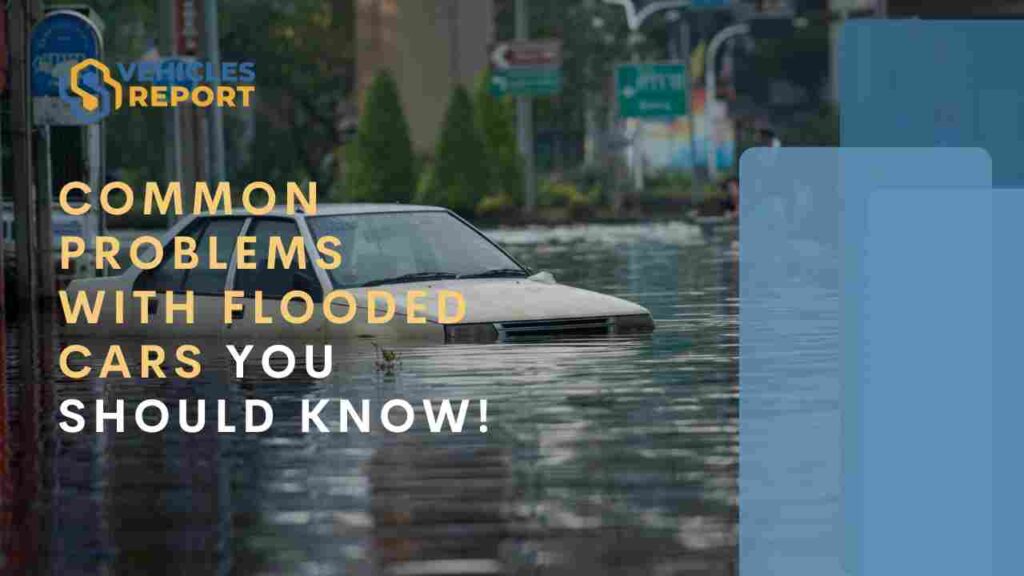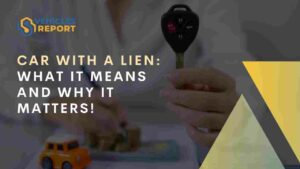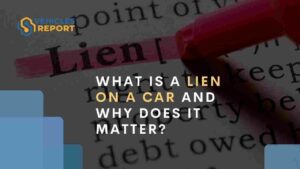Flood-damaged cars can present serious challenges for owners, even years after the floodwaters have receded. These vehicles may appear fine at first glance, but hidden problems can lurk beneath the surface.
As a potential buyer, it’s crucial to recognize the common issues with flood-damaged cars to avoid expensive repairs and safety hazards. One of the best ways to uncover these hidden problems is through a detailed VIN check, such as the ones provided by Vehicles Report.
Why Flooded Cars Can Be Risky to Own
When a vehicle is exposed to floodwater, the damage can extend far beyond what you can see. It affects both visible and hidden components of the car. While the exterior may seem intact, the internal systems and performance can be compromised.
The long-term risks of owning a flood-damaged vehicle often include frequent breakdowns, costly repairs, and, in some cases, complete engine or transmission failure. More than just an inconvenience, these issues can lead to dangerous driving conditions, making it essential to know the potential hazards early on.
Floodwater can infiltrate every nook and cranny of a vehicle, causing irreversible damage. Components critical for safety and performance, such as the electrical system and engine, are often the most affected. Ignoring flood damage, even if the car appears fine, is a gamble most buyers cannot afford to take.
Electrical System Damage
The electrical system is one of the vulnerable areas in a flood-damaged vehicle. When water enters the car, it can easily reach wiring, fuses, and critical electronic components, resulting in short circuits, malfunctioning sensors, and erratic behavior from essential systems like airbags and power steering.
Once the electrical components have been compromised by water, they may never work correctly again. The damage can sometimes worsen, leading to costly repairs or complete system failures. For example, your airbag system might malfunction due to water damage to the control module, posing a severe safety risk.
Malfunctioning sensors could also impact your ability to monitor vehicle performance and fuel efficiency, creating ongoing frustrations.
The worst part is that electrical issues caused by flood damage are only sometimes immediately apparent. Some problems only surface after a few months or even years of use, meaning you could be stuck with an unsafe and expensive vehicle.
Engine and Transmission Issues
One of the most significant and costly problems caused by flooding is engine and transmission damage. Floodwater can easily seep into these critical components, causing corrosion and rust to form in places where they shouldn’t. This damage often leads to poor engine performance and transmission failure, requiring expensive repairs or a full replacement.
When water enters the engine, it can mix with the oil, causing it to lose its lubricating properties. If the damage is severe enough, this reduces the engine’s ability to operate smoothly, leading to overheating, poor fuel economy, or even complete engine failure. Transmission systems can also suffer the same fate. If water enters the transmission fluid, it can cause the gears to slip or fail, leading to a complete transmission rebuild.
Both engine and transmission issues are expensive to fix, and in many cases, the damage is so extensive that it’s not worth repairing. Therefore, thoroughly inspecting these parts is essential when considering a flood-damaged vehicle.
Interior and Upholstery Damage
Floodwaters can also wreak havoc on a vehicle’s interior. The upholstery, carpets, and padding can become soaked, creating an ideal mold and mildew growth environment. This leaves a musty, unpleasant smell and deteriorates the materials over time. Mold growth on upholstery can be difficult, if not impossible, to remove altogether, and it can pose health risks to passengers.
In addition to mold, floodwaters can cause the interior fabrics to deteriorate, weakening the overall structure of the car’s interior. The floor mats, door panels, and seats can become stained, discolored, and weakened by prolonged exposure to moisture. Once the interior has been damaged in this way, the cost of replacing upholstery and other materials can quickly add up, diminishing the car’s resale value and comfort.
Even if the car looks clean after being dried out, lingering odors and potential mold problems can persist, making it hard to enjoy the vehicle or resell it for a fair price.
Brake and Suspension Problems
Flooding affects the engine and electrical systems, but it can also cause problems with critical safety components like the brakes and suspension. Water can enter the brake pads, rotors, and calipers, leading to rust and corrosion. This reduces the efficiency of the braking system, increasing stopping distances and potentially making the car unsafe to drive.
Similarly, the suspension system can suffer from exposure to water, which can cause parts like shock absorbers and struts to wear out more quickly. The result is a rougher, less comfortable ride and compromised handling, especially in wet conditions. Repairing or replacing brake and suspension parts can be costly, and worn-out components can pose significant safety risks for drivers and passengers.
When buying a flood-damaged vehicle, it’s important to assess the condition of these systems carefully, as undetected issues can lead to major safety concerns down the road.
Long-Term Effects of Flood Damage on a Car’s Value
Owning a flood-damaged vehicle can have long-lasting effects on its value. Whether you plan to sell it later or keep it for years, the flood damage significantly reduces the car’s resale value. Buyers are often hesitant to purchase flood-damaged cars, and dealers may offer a fraction of the market value for these vehicles, knowing the repair costs involved.
In some cases, flood-damaged cars may not even be insurable or excluded from coverage under specific policies. This can leave you financially exposed if something goes wrong with the vehicle. Additionally, finding a buyer willing to pay a fair price for a flood-damaged car can be extremely difficult.
A car in a flood may also be marked with a salvage or rebuilt title, reducing its marketability and future resale value. When considering a flood-damaged vehicle, you’re not just dealing with repair costs but also facing long-term financial consequences that could make it a poor investment.
Related: What You Don’t Know About Flood-Damaged Cars.
How to Check if a Car Has Flood Damage Using a VIN Report
The best way to avoid buying a flood-damaged car is to check its history. A detailed VIN report, such as the ones offered by Vehicles Report, can reveal critical information about any previous flood damage. This report can uncover hidden issues that might not be immediately visible, such as a history of water exposure or previous insurance claims related to flooding.
Running a VIN check with Vehicles Report can give you a comprehensive overview of the car’s history. The report can also alert you to any potential red flags, such as a flood-damaged vehicle that has been cleaned up and resold without proper disclosure.
Related: Check out the VIN decoder tool here
Additionally, learning more about flood damage and its hidden risks is essential.
If you’re considering purchasing a used car, a VIN check is an essential step to avoid hidden flood damage. It’s an easy and effective way to protect yourself from making a risky investment.
Conclusion
Flood-damaged cars pose serious risks to both your wallet and safety. From electrical malfunctions to engine corrosion and interior damage, the long-term consequences of owning a flood-damaged vehicle can be costly and frustrating. Understanding the common problems with flooded cars is crucial for making an informed decision when purchasing a used vehicle.
Before buying any used car, especially one in a flood, consider running a VIN check to reveal hidden damage. With a detailed report from Vehicles Report, you can find peace of mind to avoid a risky purchase and ensure you’re making a sound investment.








